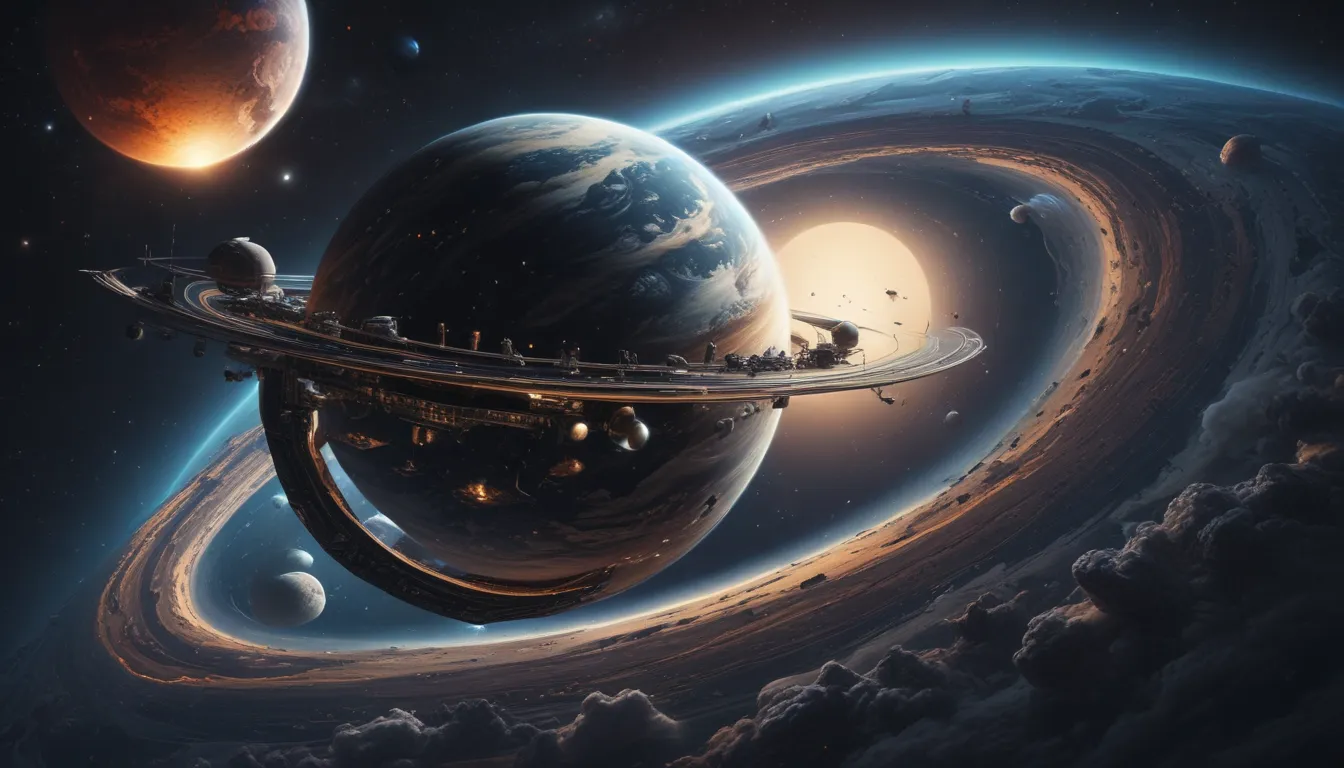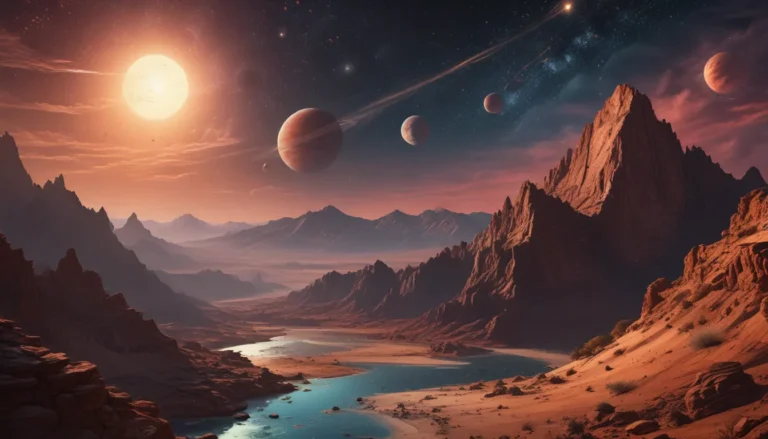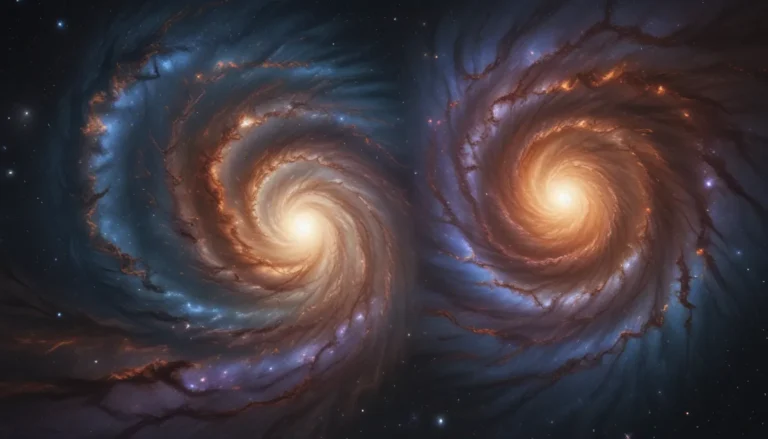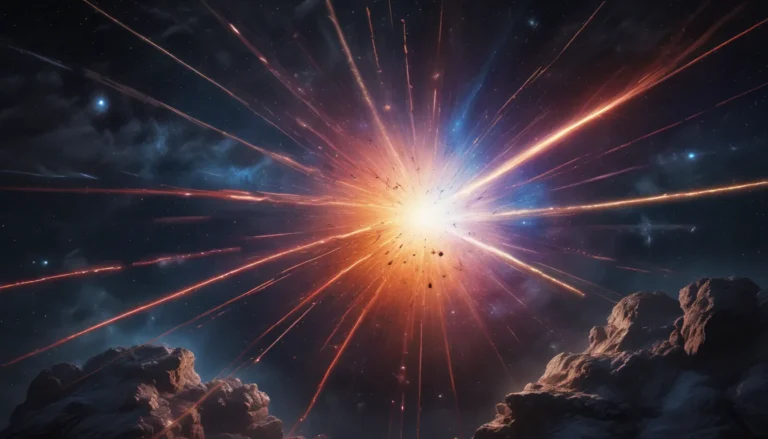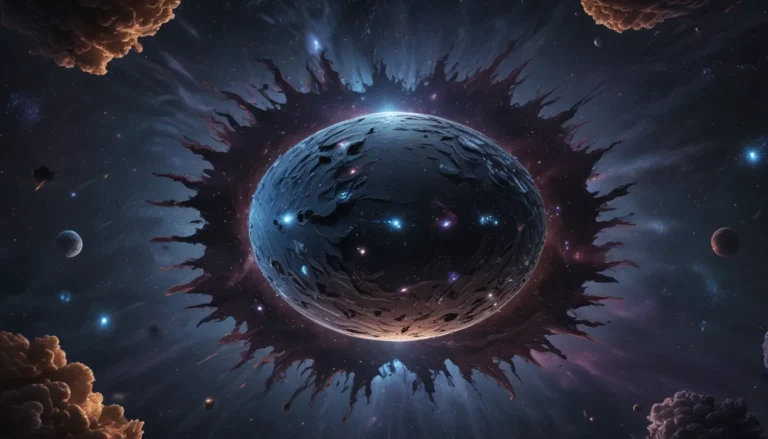The pictures we use in our articles might not show exactly what the words say. We choose these pictures to make you interested in reading more. The pictures work together with the words but don’t take their place. The words still tell you the important facts.
Are you ready to dive into the mesmerizing realm of orbital periods and uncover some truly astonishing facts that will leave you in awe? From the graceful dance of planets around the sun to the majestic speed of comets racing through space, the concept of orbital periods is sure to spark your curiosity and broaden your understanding of the universe. Join us on an exciting journey through the orbits of celestial bodies as we explore 12 mind-blowing facts about orbital periods.
Unveiling the Mysteries of Orbital Periods
The concept of orbital period is a fundamental aspect of astrophysics and astronomy, shedding light on the dynamics of celestial bodies as they traverse through space. Defined as the time taken for an object to complete one orbit around another object under the influence of their gravitational interaction, orbital periods play a crucial role in shaping our understanding of the vast universe around us.
The Fascinating World of Orbital Periods:
- Orbital Period Definition: The time taken for objects to orbit each other, offering insights into the movements of celestial bodies and the wonders beyond our planet.
- Key Insights: From Earth's annual journey around the Sun to the Moon's monthly orbit, orbital periods govern the mesmerizing motions of celestial objects in our cosmic neighborhood.
Exploring the Highlights of Orbital Periods:
Earth’s Dance Around the Sun:
The orbital period of Earth around the Sun spans approximately 365.25 days, leading to the occurrence of leap years every four years to account for the additional quarter day. This cycle also influences the changing seasons on Earth, marking a fascinating interplay between our planet and the Sun.
The Moon’s Celestial Waltz:
With an orbital period of approximately 27.3 days, the Moon's journey around the Earth showcases a mesmerizing display of different lunar phases throughout the month. This phenomenon not only mesmerizes observers but also exerts a significant influence on the tides on Earth, highlighting the intricate connections between celestial bodies.
The International Space Station’s Swift Circumnavigation:
Zooming around the Earth in an approximate 90-minute orbital period, the International Space Station (ISS) treats astronauts to a breathtaking experience of witnessing multiple sunrises and sunsets in a single day. This rapid orbit sheds light on the incredible speed at which man-made satellites traverse through space.
Jupiter’s Majestic Orbits:
As the largest planet in our solar system, Jupiter boasts an orbital period of approximately 11.9 Earth years, showcasing its grandeur and vast distance from the Sun. With a remarkable collection of 79 known moons, each with its own unique orbital period, Jupiter's stellar presence in our cosmic backyard is truly awe-inspiring.
Halley’s Comet Returns:
The famous Halley's Comet graces our skies once every 76 years, making a grand appearance that captivates observers worldwide. Its last visit in 1986 left a lasting impression, with its anticipated return in 2061 igniting excitement among stargazers and astronomers alike.
Geostationary Satellites’ Fixed Abode:
Satellites in geostationary orbit boast an orbital period of approximately 24 hours, allowing them to remain stationary relative to a specific point on Earth's surface. This unique orbit is commonly utilized for communication satellites that enable television broadcasts and internet connectivity, showcasing the practical applications of orbital mechanics.
Pluto’s Prolonged Orbit:
Formerly considered the ninth planet in our solar system, Pluto now holds the title of a dwarf planet, boasting an orbital period of approximately 248 Earth years. Its elliptical and inclined orbit contributes to its extended journey around the Sun, offering a fascinating glimpse into the diversity of celestial objects within our cosmic neighborhood.
Binary Stars’ Enigmatic Orbits:
In binary star systems, two stars revolve around their common center of mass, with orbital periods ranging from a few hours to thousands of years. The diverse masses and distances of these stellar companions result in a wide spectrum of orbital durations, highlighting the intricate dynamics of celestial pairs.
Comet’s Varied Trajectories:
Comets exhibit a wide range of orbital periods, spanning from a few years to several thousand years, as they embark on highly elliptical and elongated paths through our solar system. Influenced by the gravitational forces of the Sun and larger celestial bodies, comets embark on captivating cosmic journeys that captivate astronomers and space enthusiasts.
Black Holes’ Extended Orbits:
With orbital periods spanning millions or even billions of years, black holes exert a potent gravitational pull that shapes the trajectories of objects within their vicinity. These enigmatic cosmic entities continue to intrigue scientists as they unravel the mysteries of black hole orbits and their profound impact on the surrounding space.
Milky Way’s Epic Traverse:
The Milky Way galaxy boasts an estimated orbital period of around 230 million years, highlighting the vast scale and grandeur of our cosmic home. As our solar system embarks on this immense journey around the galaxy's center, we are reminded of the boundless expanse of space and the intricate interplay of celestial bodies within it.
Embarking on a Cosmic Journey:
In conclusion, the exploration of orbital periods unveils a world of fascinating phenomena that shape the dynamics of celestial objects and illuminate the wonders of the universe. From the graceful revolutions of planets to the dazzling returns of comets, the orbital period serves as a vital piece of the cosmic puzzle, connecting us to the cosmic dance unfolding overhead.
As we delve into the captivating facts about orbital periods, we embrace the beauty and complexity of our cosmic neighborhood, igniting a sense of wonder and awe for the vast universe surrounding us. So, next time you gaze up at the night sky, remember the intricate orbits and celestial ballets that unfurl above, inviting you to join in the cosmic exploration of the unknown.
Frequently Asked Questions:
Q: What is an orbital period?
A: The orbital period refers to the time taken for a celestial body to complete one orbit around another object, shaping the movements of celestial bodies in space.
Q: How is the orbital period calculated?
A: Kepler's third law of planetary motion is used to calculate the orbital period, taking into account the distance and masses of the objects involved in the orbit.
Q: What affects the orbital period?
A: The orbital period is influenced by the distance between objects, their masses, gravitational interactions, and external forces, dictating the duration of their orbital journeys.
Q: Can the orbital period change?
A: Yes, the orbital period can change due to alterations in distances, masses, gravitational interactions, and external forces experienced by the objects in orbit.
Q: Are orbital periods constant?
A: Orbital periods can vary based on specific circumstances, with factors like lunar librations causing slight fluctuations in the orbital periods of celestial bodies.
Join Us in the Cosmic Discovery:
Our commitment to delivering informative and engaging content resonates with our dedication to sharing credible insights and diverse perspectives on the wonders of the universe. As you embark on your cosmic journey through the orbits of celestial bodies, trust in our unwavering pursuit of quality and authenticity, ensuring a enriching and enlightening experience as you explore the marvels of the cosmos.
